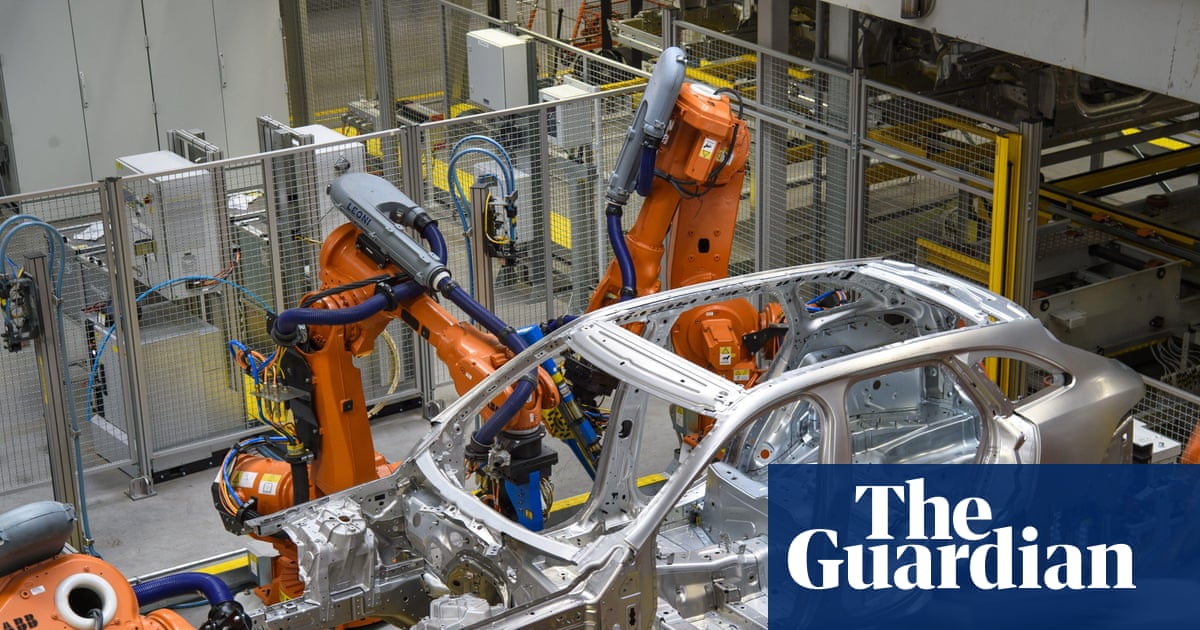Central banks have moved interest rates sharply in recent years, but the link from policy rates to corporate investment remains a black box. Do cheaper loans actually cause firms to invest more? If so, by how much and for which type of firms? Aggregate evidence indicates large effects on investment (e.g. Christiano et al. 2005) and highlights the role of lower credit costs (e.g. Gertler and Karadi 2015). However, these responses encompass many factors, including indirect effects such as demand, making it difficult to isolate the direct impact of financing costs. For policy purposes, it is crucial to pin down the size of this direct channel and the heterogeneity that makes transmission state-dependent over time (Gnewuch and Zhang 2025). Additionally, recent models emphasise the importance of the direct borrowing cost channel for heterogeneous households (Auclert et al. 2020) and firms (Koby and Wolf 2020).
A survey approach: Confronting firms with hypothetical loan rate changes
In a new paper (Best et al. 2025), we present novel evidence on the micro and macro effects of interest rates on investment. Using hypothetical vignettes, we elicit firms’ investment adjustments to loan rate changes, thereby isolating the direct borrowing cost channel. Open-ended responses reveal why some firms do not adjust and the extent to which the borrowing cost channel features in managers’ views of monetary policy. Additional vignettes, survey questions, and linked financial statements enrich the analysis. By embedding this in a large German firm panel, we can compare vignette responses with firms’ behaviour around actual monetary policy shocks. We use the ifo Business Survey, a monthly survey of a representative sample of German firms typically answered by C-level executives (Hennrich et al. 2023). Our main sample includes more than 3,200 firms.
Firms’ investment adjustment to loan rate changes
In December 2023, we asked firms to imagine a reduction in loan rates of 0.5, 1, 3, or 4 percentage points lasting two years, while holding everything else constant. This setup isolates the causal effect of loan rates – the key marginal cost of external finance for most German firms – on investment. The rate change applies to loans of all maturities and is defined relative to firms’ current expected rates. At the time, the ECB’s main refinancing rate was 4.5%, which was expected to remain elevated over the next two years. Panel A of Figure 1 shows the average adjustment to firms’ investment plans over the subsequent two years, expressed in percent.
Figure 1 Semi-elasticity of investment with respect to loan rate changes
Notes: Panel A: average investment adjustment in percent following hypothetical change in loan rate; Investment adjustment winsorized at 100%; sample restricted to firms that initially planned to invest in 2024 and 2025. Green dot shows the response of aggregate corporate investment in the first year after a monetary policy shock (with shaded 90% confidence interval), estimated using local projections and high-frequency identified monetary policy shocks (Jarociński and Karadi 2020); response scaled to a 1 percentage point reduction in firms’ cost of external financing. Panel B: share of firms adjusting their investment plans following hypothetical change in loan rate for firms with and without existing investment plans for the respective year.
A one percentage point decrease in the loan rate raises planned investment by approximately 6% in the following year and by about 7% the year after that. A similar response is observed for a half-percentage point cut, rising to 12-15% for reductions in loan rates of 3-4 percentage points. This implies a lower elasticity for larger rate changes. In comparison, the overall monetary policy effect on corporate investment – capturing additional channels – amounts to about 15% in the first year following a shock that lowers borrowing costs by 1 percentage point. Thus, the total monetary policy effect is roughly twice the size of the impact of borrowing costs alone.
There is substantial heterogeneity underlying the average investment adjustment. While most firms do not adjust investment at all, adjusting firms significantly revise plans by about 18-30%. Among firms initially planning to invest, the share of adjusters ranges from 30% for a 0.5 percentage point cut to 49% for a 4 percentage point cut. This percentage is much lower among firms without investment plans, which is consistent with fixed adjustment costs (see Panel B of Figure 1).
We ask firms with existing investment plans that do not adjust their investment to explain their reasoning in an open-ended text format. Two narratives stand out. First, about 37% of firms argue that they have sufficient internal funds and prefer to use them for investment, in line with the pecking order theory (Myers 1984). Second, about 39% of firms report that they are not at the margin to adjust their investment plans. This could reflect either a low marginal return on capital, which is consistent with a lack of additional profitable investment opportunities, or a high marginal return on capital, in which case investment is driven by capacity or technological requirements rather than financing costs.
Further heterogeneity analyses confirm the key role of the firms’ financial conditions for their interest rate sensitivity. Firms relying more on external funds, that have recently negotiated loans with banks, or that report financial constraints are more likely to increase investment following a reduction in the loan rate. Additionally, firms facing shortages of skilled labour and those operating in industries with more durable capital goods adjust their investment more strongly.
In a follow-up vignette, we elicit how firms adjust their required returns on new investments, or ‘hurdle rates’, in response to changes in the loan rate. Consistent with prior evidence, hurdle rates are sticky (Graham 2022, Gormsen and Huber 2023): most firms do not adjust their hurdle rates after a loan rate cut. Although hurdle rate adjustment is strongly correlated with investment adjustment, firms are more likely to adjust investment than hurdle rates. This suggests that the insensitivity of hurdle rates to transitory loan rate changes does not necessarily impede investment.
The macroeconomic relevance of the direct borrowing cost channel
We assess the role of the direct borrowing cost channel for monetary policy using two approaches. First, in a later survey wave, we ask firms an open-text question about the discussions and considerations that typically arise in their investment planning when the ECB changes its key rate. Notably, more than half of the firms do not discuss the implications of monetary policy changes for their investment plans. A quarter refer to concrete transmission channels, with one dominating: 83% cite the direct interest rate channel via external financing, suggesting a crucial role of the mechanism we consider in our vignette for aggregate dynamics. Twelve percent mention changes in demand due to interest rate changes, and 11% refer to general-equilibrium effects. Both are especially common among firms with high business cycle attachment, consistent with models of rational inattention.
Figure 2 Perceived channels of monetary policy
Note: Hand-coded perceived channels of monetary policy elicited in an open-ended question. Subsample of firms that clearly indicate which channel(s) they have in mind.
Second, we leverage the survey’s panel dimension and examine whether responses to the one-time vignette regarding changes in borrowing costs predict dynamics following monetary policy shocks. Specifically, we analyse the monthly output dynamics of manufacturing firms in our sample in response to high-frequency identified monetary policy shocks over the past 23 years (Jarociński and Karadi 2020). Figure 3 shows that firms that do not adjust investment in the vignette also exhibit lower output responses after monetary policy shocks. This relationship is robust to many potential confounders. This underscores the importance of firms’ investment sensitivity to interest rates for the monetary transmission mechanism.
Figure 3 Production response to monetary policy shock by interest sensitivity
Notes: Impulse response functions at monthly frequency of cumulative production to a 1 pp monetary policy shock (Jarociński and Karadi 2020) estimated using local projections over 01/1999-12/2021. The sample is balanced over the horizons. Orange: firms adjusting investment in the vignettes. Blue: firms not adjusting investment in the vignettes. The sample is restricted to manufacturing firms that planned to invest in 2024 and 2025. Shaded areas represent the 90% confidence level. Standard errors are two-way clustered at the firm and the 2-digit-industry-by-month level.
Policy implications
There are at least three important policy implications. First, many firms do not adjust investment after borrowing costs decreases because they report having sufficient internal funds. In periods of heightened uncertainty (e.g. geopolitical risk), firms build precautionary cash buffers, which further reduces their sensitivity to loan rate changes. Second, firms’ sensitivity to borrowing costs decreases with the size of the change (e.g. due to managerial constraints). Thus, monetary policy becomes less effective when it has to counter weak demand. Lastly, many firms do not have the general-equilibrium effects of monetary policy in mind, consistent with ‘GE neglect’. As a result, firms’ demand may be lifted by monetary policy without managers linking it to policy, making transmission slower.
References
Auclert, A, M Rognlie and L Straub (2020), “Micro jumps, macro humps: Monetary policy and business cycles in an estimated HANK model”, NBER Working Paper 26647.
Best, L, B Born M Menkhoff (2025), “The impact of interest: Firms’ investment sensitivity to interest rates”, CEPR Discussion Paper 20695.
Christiano, L J, M Eichenbaum and C L Evans (2005), “Nominal rigidities and the dynamic effects of a shock to monetary policy”, Journal of Political Economy 113(1): 1–45.
Gertler, M and P Karadi (2015), “Monetary policy surprises, credit costs, and economic activity”, American Economic Journal: Macroeconomics 7(1): 44–76.
Gnewuch, M and D Zhang (2025), “Lumpy investment matters for the (heterogeneous) transmission of monetary policy”, VoxEU.org, 27 January.
Gormsen, N J and K Huber (2023), “Firms’ required returns to capital and the missing investment puzzle”, VoxEU.org, 10 August.
Graham, J R (2022), “Presidential address: corporate finance and reality”, Journal of Finance 77(4): 1975-2049.
Hennrich, J, S Sauer and K Wohlrabe (2023), “Who reports the mood in German boardrooms? Evidence from the ifo business survey”, CESifo Working Paper 10571.
Jarociński, M and P Karadi (2020), “Deconstructing Monetary Policy Surprises—The Role of Information Shocks”, American Economic Journal: Macroeconomics 12(2): 1-43.
Koby, Y and C K Wolf (2020), “Aggregation in heterogeneous-firm models: Theory and measurement”, mimeo, Princeton University.
Myers, S C (1984), “Capital structure puzzle”, Journal of Finance 39: 575-592.






